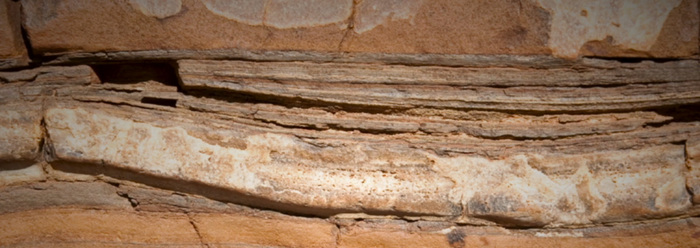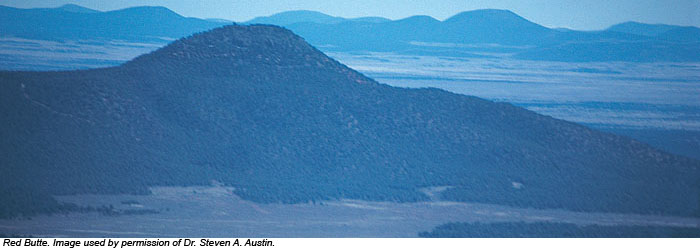The latest fossil biochemistry paper, published in Scientific Reports, describes “blood vessel structures” recovered from inside a T. rex femur.1 This is the same femur in which the Journal of Vertebrate Paleontology featured collagen fibers, protein remnants, and possible DNA signatures back in 1997.2 Since then, debate has raged among experts. On one hand, fossil experts keep reporting more biochemicals in all kinds of fossils. On the other hand, protein experts keep confirming that biochemicals cannot possibly last millions of years. This new report attempts to bridge those two parties.
The Scientific Reports paper focused on mechanisms that might help protein last for 65 million years—the length of time that secular scientists insist the T. rex bone rested in the earth. Such mechanisms bear a big burden. Assuming normal temperatures, proteins and other biomolecules fall apart after only thousands of years. The study authors themselves indicate the debate still rages. They wrote,
Kinetics, in this case, refers to protein decay rate studies. Thus, we are witnessing a struggle between established facts and mainstream geological time scales.
Fact: Fossils found around the globe and throughout the earth’s rock layers have original biochemicals like collagen and chitin.
Fact: Biochemicals don’t last millions of years.
Fact?: These fossils are at least 65 million years old.
Something’s gotta give.
The first fact receives more confirmation with each new report of soft tissue structures like this one in Scientific Reports. We maintain a list of such reports that has now exceeded 100.3 The second fact receives more confirmation with each new study of protein longevity. The third fact remains non-negotiable by most scientists on philosophical grounds. To doubt millions of years is to shut down evolution that requires them and introduce the idea of a recent creation.
Rather than admit to a recent creation and the Flood, brave researchers imagine ways to stave off the unforgiving laws of chemistry. One mechanism called for nearby iron atoms to catalyze a class of reactions known as Fenton chemistry.4 This may actually have happened to some of the molecules that made up the dinosaur and other fossil tissues, turning them into larger, more resistant chemicals.
However, the Fenton chemistry preservation mechanism suffers big flaws. For one, Fenton reactions overwhelmingly break apart more biomolecules than they bind together. But the biggest flaw is the fact that so many researchers have found a flood of evidence for original proteins themselves, not only the more resistant chemicals that a fraction of Fenton reactions would produce. Thus, even if Fenton reactions produced resistant molecules, then so what? Results continually show the presence of original biochemicals, and their mere existence still has no reasonable explanation in a uniformitarian world.
Another possible mechanism produces a similar effect. Maillard reactions cross-link proteins with sugars to make large, more stable molecules called AGEs. But how stable would these be? Nobody has tested how long AGEs could last.5 And still, the question is not how to get cross-linked proteins to last, but how to get those original proteins—and possibly DNA—to defy destructive chemical reactions such as oxidation, deamidation, and hydroxylation for millions of years.
Iron atoms can help both Fenton and Maillard reactions occur, although chances are they would help the destructive reactions even more. The team did find a thin coating of iron-containing mineral on the T. rex blood vessels. But in what way does this show they could last tens of millions of years? Such assertions boil down to hand-waving.
This Scientific Reports paper attempts to accumulate preservation effects from both Fenton and Maillard reactions. That’s like trying to use two holey buckets, one atop the other, to hold water...for millions of years. Expecting these kinds of chemical reactions to defy basic chemistry is like expecting water in holey buckets to defy gravity.
In the meantime, the report includes results from state-of-the art synchrotron radiation techniques to characterize, yet again, what look like original proteins in Tyrannosaurus rex blood vessels. Not long-lasting polymers, but short-lived collagen protein. These fossils still look fresh. The debate still simmers.
References
1. Boatman, E. M. et al. 2019. Mechanisms of soft tissue and protein preservation in Tyrannosaurus rex. Scientific Reports. 9:15678.
2. Schweitzer, M. H. et al. 1997. Preservation of Biomolecules in Cancellous Bone of Tyrannosaurus rex. Journal of Vertebrate Paleontology. 17 (2): 349-359.
3. View the list here.
4. Anderson, K. Dinosaur Tissue: A Biochemical Challenge to the Evolutionary Timescale. Answers in Genesis. Posted on answersingenesis.org October 20, 2016, accessed November 24, 2019.
5. Thomas, B. Do Maillard Reactions Explain Dinosaur Proteins? Creation Science Update. Posted on ICR.org November 7, 2019, accessed November 24, 2019.
Dr. Thomas is a Research Associate at the Institute for Creation Research and earned his Ph.D. in paleobiochemistry from the University of Liverpool.





















